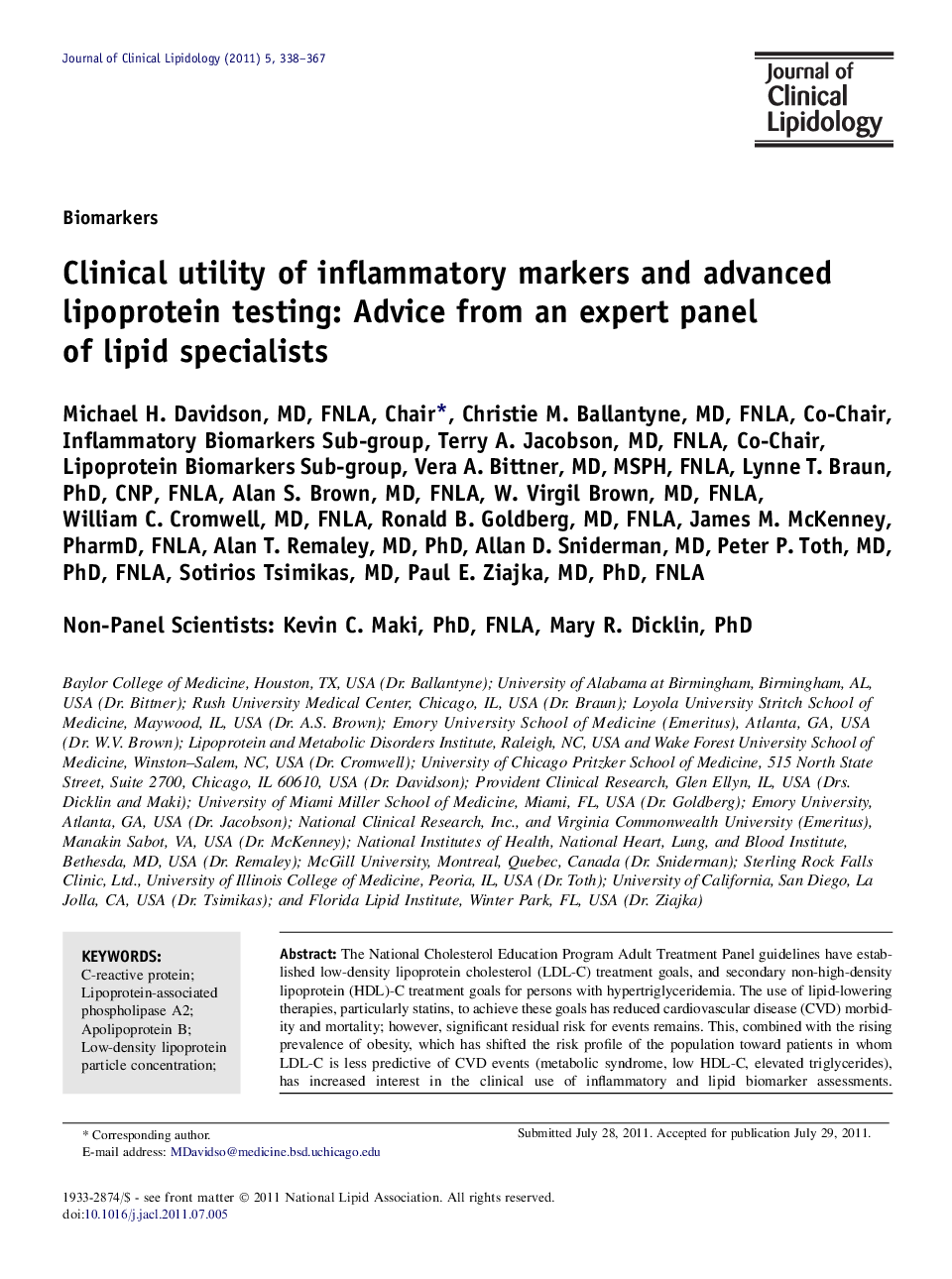| Article ID | Journal | Published Year | Pages | File Type |
|---|---|---|---|---|
| 2966341 | Journal of Clinical Lipidology | 2011 | 30 Pages |
The National Cholesterol Education Program Adult Treatment Panel guidelines have established low-density lipoprotein cholesterol (LDL-C) treatment goals, and secondary non-high-density lipoprotein (HDL)-C treatment goals for persons with hypertriglyceridemia. The use of lipid-lowering therapies, particularly statins, to achieve these goals has reduced cardiovascular disease (CVD) morbidity and mortality; however, significant residual risk for events remains. This, combined with the rising prevalence of obesity, which has shifted the risk profile of the population toward patients in whom LDL-C is less predictive of CVD events (metabolic syndrome, low HDL-C, elevated triglycerides), has increased interest in the clinical use of inflammatory and lipid biomarker assessments. Furthermore, the cost effectiveness of pharmacological intervention for both the initiation of therapy and the intensification of therapy has been enhanced by the availability of a variety of generic statins. This report describes the consensus view of an expert panel convened by the National Lipid Association to evaluate the use of selected biomarkers [C-reactive protein, lipoprotein-associated phospholipase A2, apolipoprotein B, LDL particle concentration, lipoprotein(a), and LDL and HDL subfractions] to improve risk assessment, or to adjust therapy. These panel recommendations are intended to provide practical advice to clinicians who wrestle with the challenges of identifying the patients who are most likely to benefit from therapy, or intensification of therapy, to provide the optimum protection from CV risk.
